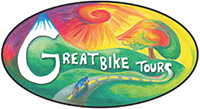Join us and visit Virginia to Experience History on the Roads of Virginia’s Historic Triangle
Virginia’s Historic Triangle is a must-visit for any history buff. The area, which includes Jamestown, Yorktown, and Williamsburg, is home to some of the most important sites in American history.
Jamestown was the first permanent English settlement in North America. Founded in 1607, the colony struggled to survive in its early years, but eventually grew into a thriving community. Jamestown is now a National Historical Park, and visitors can explore the ruins of the original fort, as well as a number of reconstructed buildings.
Yorktown is where the American Revolutionary War effectively came to an end. In 1781, British forces surrendered to American troops at Yorktown, marking a major turning point in the war. Today, Yorktown is a National Historical Park, and visitors can tour the battlefield and learn about the events that took place there.
Williamsburg was the capital of Virginia from 1699 to 1780. During this time, it was a thriving city with a population of over 10,000 people. Williamsburg is now home to Colonial Williamsburg, a living museum that recreates the city as it was in the 18th century. Visitors can tour the Governor’s Palace, the Capitol, and a number of other historic buildings.
In addition to these three major sites, there are a number of other historical attractions in the Historic Triangle. These include:
- Jamestown Settlement, a living history museum that tells the story of the first English settlers in North America.
- Yorktown Victory Center, a museum that tells the story of the American Revolutionary War and the Battle of Yorktown.
- Carter’s Grove Plantation, a restored plantation that offers a glimpse into life in the 18th century.
- Colonial Williamsburg Inn, a historic hotel that offers luxurious accommodations in the heart of Colonial Williamsburg.
With so much to see and do, you’re sure to have a memorable trip.
The Historic Triangle is a great place to spend a few days exploring American history.
Jamestown
The first permanent English settlement in the New World was established at Jamestown in 1607. There are two major heritage sites at Jamestown: Jamestown Settlement, a living history museum which includes a reconstructed native American village, colonial fort, and replica ships, operated by the Commonwealth of Virginia; and Historic Jamestown, the National Park Service site which includes Jamestown Island and the ongoing archaeological projects.
Williamsburg
In 1699, the capital of Virginia was moved from Jamestown to a location on high ground at Middle Plantation at the suggestion of students from the College of William and Mary, which had been established there in 1693. Middle Plantation was soon renamed Williamsburg, in honor of King William III, and it was a busy place until the American Revolution.
In 1780 during the revolution, the capital and government were moved to a more secure location at Richmond. Williamsburg became a largely sleepy little town for almost 150 years, as many young people left the Tidewater area in search of new lands to the west and other frontiers. In the early 20th century, the town was revived due to the preservation efforts of Reverend Dr. W.A.R. Goodwin, rector of Bruton Parish Church, and the generosity of Standard Oil heir John D. Rockefeller Jr. and his family, who shared a dream of restoring the old colonial capital city to its 18th-century state. They worked for decades to develop that vision to honor the early colonial capital.
Today, the result of those efforts, Colonial Williamsburg, is a large living museum of early American life. It has 88 original buildings and dozens of restored and recreated buildings and re-enactors. It is one of the most popular tourist destinations in the world. The Visitor’s Center (right off the Colonial Parkway) features a short movie. It has a parking area, as automobiles are restricted from the restored area. A wheelchair-accessible shuttle bus service is provided.
Yorktown
The third point of the triangle is Yorktown, where General Cornwallis surrendered to George Washington in 1781 in the last land battle of the American Revolution. There are two large visitor centers, battlefield drives, and a waterfront area. The historic area of downtown has numerous buildings from the pre-Revolutionary era.
The three Historic Triangle areas (and the Colonial Parkway between them) have been restored to promote a sense of the past. Nearby are many modern hotels, motels, campgrounds, restaurants, shops and stores, gasoline stations, and amusements.
- Colonial Williamsburg Foundation’s official site
- Historic Jamestowne
- Williamsburg Area Convention and Visitors Bureau – The Official Website
Join us biking through history on our next tour.
Our 6-day bike trip is based in Colonial Williamsburg, which in the 18th century was the capital of the Colony of Virginia – Britain’s largest and wealthiest colony in the New World. The entire old-town-area has been “frozen in time” and preserved as a living history museum portraying colonial Virginia on the eve of the American Revolution. Everyone remains in character 24 hours a day – shop keepers, townsfolk, children at play, marching militia, tavern folks, political figures, slaves – depicting the days, months, and years leading up to and during the Revolutionary War. Enjoy lots of open-air theatre, visit trade shops, and dine at 18th century taverns. Come, be part of the story, on your 21st century bicycle! Learn more at https://greatbiketours.com/virginia-colonial-williamsburg/
We would love to see you!
For more information, contact us with your questions.
Source:
This article incorporates text from a publication now in the public domain: Chisholm, Hugh, ed. (1911). Encyclopædia Britannica (11th ed.). Cambridge University Press.







